One of the fundamental principles of mysticism is that the Universe is mental. Not psychological, but mental. In other words, everything, whether it be matter or energy, is Mind. Whose mind?
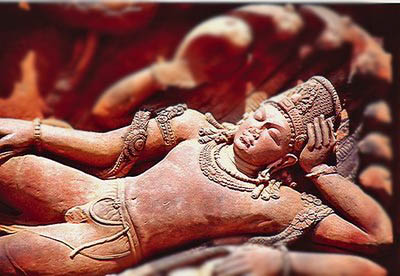 In theological terms, everything unfolds within the Dream of God. Everything is made of dream-stuff. In a sense, nothing is substantial - but in another sense, everything is real as it could ever be. Reality may be a dream, but it's an orderly dream: there are natural laws and patterns. We ignore these laws at our own peril.
In theological terms, everything unfolds within the Dream of God. Everything is made of dream-stuff. In a sense, nothing is substantial - but in another sense, everything is real as it could ever be. Reality may be a dream, but it's an orderly dream: there are natural laws and patterns. We ignore these laws at our own peril.
Some have opined that the world is unreal and should be ignored. Others trust only what they can perceive with their five senses and shun the rest as imaginary. What different people call Reality, is merely a reflection of their capacity to apprehend Reality. If our spiritual faculties are dormant, we cling to a material view. If we overlook the order of life, we live at the mercy of superstition.
The mystical tradition recommends that we see the world as neither real nor unreal.
In the language of the Buddhist Tetralemma, Reality cannot be said to exist. It cannot be said not to exist. It cannot be said to both exist and not exist. It cannot be said to neither exist nor not exist. In other words, the Absolute transcends thought. Yet, we experience it all the time.
According to mainstream science, we are physical beings, chemical organisms that have developed a capacity for intelligence and self-awareness. Consciousness is an epiphenomenon of the brain. We can think, but whether there is such a thing as a mind - apart from the body - is a matter of conjecture at best. From a purely material perspective, the existence of spiritual dimension to life is a delusion.
The mystic sees things differently: we are spiritual beings, having a material experience. Intelligence is inherent in things, because things are in fact Mind. Consciousness appears as form. You're not conscious: consciousness appears as you. Mind has divided itself up, to observe itself.
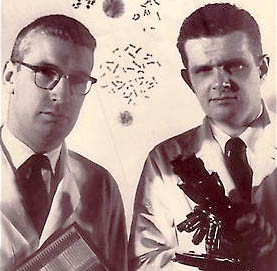 With a material-only perspective, psychic and spiritual phenomena are impossible to explain. How does the information travel? How can a planet located millions of miles away, "influence" us to think a certain way, or to have certain problems, or bring about success and and failure in our lives? Basic mystical principles like the Law of Correspondence ("As Above, So Below"), make no sense in a purely mechanistic philosophy.
With a material-only perspective, psychic and spiritual phenomena are impossible to explain. How does the information travel? How can a planet located millions of miles away, "influence" us to think a certain way, or to have certain problems, or bring about success and and failure in our lives? Basic mystical principles like the Law of Correspondence ("As Above, So Below"), make no sense in a purely mechanistic philosophy.
With the notion of a mental creation, such phenomena become possible. Matter and energy are forms of consciousness, not the other way around. If we limit ourselves to a reality that can be measured by machines, we run the risk of lowering ourselves to the level of machines.
Limiting ourselves to a material-only view of life is what the Buddhists call Nihilism. It's one of two extreme views, which are best avoided. The other extreme view, they call Eternalism, which suggests that we possess an inner nature this is separate from life and never changes. Neither view is satisfactory in light of common experience.
To explain Life adequately, it's helpful to have a world view that leaves room for apparent paradoxes and contradictions and avoids the two extreme views. One of the fundamental principles of Traditional Chinese Medicine, the Yin/Yang theory, suggests that opposites not only attract and define one another: they contain one another. When reaching an extreme, they transform into one another.
What some call spiritual is really just another form of matter: subtle matter. What we perceive as solid, is really just energy, at a various rates of vibration. Energy itself, is just thought, at a certain rate of vibration. Science is, in fact, a study of Spirit. Likewise, Spirituality is a form of Science. As we loosen our insistence on an "either/or" perspective, many marvels become possible.
 In classical astrology, only a handful of symbols are used. They describe everything. Everything! The same symbols function as planets, signs, houses and aspects. The seven classical astrological symbols consist of the 2 lights (Sun and Moon) and 5 "wanderers" (Mercury, Venus, Mars, Jupiter, Saturn). The lights rule one sign each and the wanderers have rulership over two signs. That makes 12. Each of the 12 signs corresponds to a house. For example, Jupiter rules Sagittarius and Pisces, which correspond to the Ninth and Twelfth Houses.
In classical astrology, only a handful of symbols are used. They describe everything. Everything! The same symbols function as planets, signs, houses and aspects. The seven classical astrological symbols consist of the 2 lights (Sun and Moon) and 5 "wanderers" (Mercury, Venus, Mars, Jupiter, Saturn). The lights rule one sign each and the wanderers have rulership over two signs. That makes 12. Each of the 12 signs corresponds to a house. For example, Jupiter rules Sagittarius and Pisces, which correspond to the Ninth and Twelfth Houses.
Each symbol relates to an aspect or angle. The Conjunction is solar, while the Opposition is Lunar. The Trine is of the nature of Jupiter, while the Sextile is of the nature of Venus. Mercury's aspect is the semi-sextile, while that of Saturn is the Inconjunct or Quincunx.
We could say that Jupiter is Sagittarius and Pisces. We could say that Jupiter is the Trine aspect. They are equivalent expressions of the same fundamental symbol. They share the same qualities: expansion, opportunity, optimism, travel, higher knowledge, the great outdoors (or oceans), etc.
Because the planets are the same symbols as the signs and houses and aspects, it becomes very easy to read a chart and find the essential themes. Themes are patterns which appear over and over in the horoscope.
Consider this Jupiter emphasis: a person has Leo Rising with Sun in Aries. That means that the lord of the chart (Sun) in the Ninth House. It also means that the lord of the chart is exalted - in the Ninth House - because the Sun is strongest in Aries. So the individual's Ninth House contains an exalted planet. If the individual also has Jupiter in Pisces, then even more Jupiter symbols are evident - because Jupiter is in its own sign (Pisces).
 If the same person has a lot of trines in the chart, another Jupiter pattern emerges. The person not only has a Jupiter pattern - an emphasis on those symbols - but it's a favorable one. She or he will have opportunities to travel and learn. Professional doors will open and there will be happiness through teaching and publishing. The person might be an adventurer or pioneer, or a travel agent or tour guide.
If the same person has a lot of trines in the chart, another Jupiter pattern emerges. The person not only has a Jupiter pattern - an emphasis on those symbols - but it's a favorable one. She or he will have opportunities to travel and learn. Professional doors will open and there will be happiness through teaching and publishing. The person might be an adventurer or pioneer, or a travel agent or tour guide.
Another chart might contain Sun and Moon in Square aspect to Mars and the chart lord in a sign ruled by Mars (Aries or Scorpio). If the horoscope also has Mars in the tenth house (an angular house), we see more emphasis on Mars: it's on an angle from the Ascendant, Sun and Moon (the three primary points of reference). If the Mars is weakened by being in a late degree, or retrograde, or in an unwelcome sign (Cancer, Libra) then we see that the person has a Mars emphasis - but an afflicted one.
An afflicted Mars is troublesome, out of balance. There will be problems with energy, vitality, assertiveness. There may be problems with the blood: poor circulation, high or low pressure, or skin rashes and other inflammatory conditions. The person may be impatient, with difficulty controlling the temper and may struggle with sports due to lack of physical coordination.
Like the Knight in the game of Chess, this person may have to move through life in a difficult manner - with stops and starts, setbacks and revisions. At times, life can feel like "driving with the brakes on". One of the Sanskrit names for Mars is Vakra - "the crooked one" - because an afflicted Mars often shows injuries, broken bones, lameness, etc.
Some Astrology teachers place emphasis on aspects in the chart. For example "If you have Moon trine Venus, then you're gracious and kind. You will get along nicely with women." This approach to astrology is popular in European and American text books. Your computer can generate a report which tallies the natal aspects in your chart: it can predict the future by looking ahead and delineating the "aspects" that are coming in the next few years, whether by transit, progression, eclipse, etc.
Other astrologers place emphasis on the signs. "I'm a Capricorn" (because the Sun is there in my chart). "I have a fallen Moon (Moon in Scorpio) but I also have an exalted Venus (Venus in Pisces). That means I'm emotionally intense - but I'm also gracious and artistic". Indian astrologers emphasize this approach, called Essential Dignity in western texts and Oocha Bala (exaltation strength) in Sanskrit.
A third group looks to house placement. "I was born at Noon. I'm a big shot. Period." Why ? Because the Sun in the Tenth House corresponds to natural-born managers, leaders and bosses. But we have to ask: is that Tenth-House Sun in Leo, or is it in Libra ? Is the Sun well aspected ? "Oh, it's square to a Neptune/Uranus conjunction? Why didn't you say so ?"
There is truth in all these approaches. We need them all.
 Throughout this series of articles, we have tried to show how the building blocks fit together. When we have the proper birth time and use the correct zodiac and house system, it's easy to see how they can. Some astrologers (mostly western) who use the wrong zodiac, rarely discuss planets in the signs - and with good reason (see Multiple Greek Zodiacs.)
Throughout this series of articles, we have tried to show how the building blocks fit together. When we have the proper birth time and use the correct zodiac and house system, it's easy to see how they can. Some astrologers (mostly western) who use the wrong zodiac, rarely discuss planets in the signs - and with good reason (see Multiple Greek Zodiacs.)
Many western astrologers talk mostly about aspects. Others (mostly Indian) who rely mainly on sign placements and houses (Yogas), overlook at least 33% of the art: they miss out on aspects almost entirely. Their understanding of aspects is dangerously over-simplified. Moreover, they ignore the trans-saturnian planets (Uranus, Neptune and Pluto).
 Ranked by the American Film Institute as number 13 of the top female stars of American cinema, Grace Kelly was born into a prosperous family, but her modest abilities in mathematics prevented her acceptance at her chosen college. As a result, she pursued her dream: a career in the theater.
Ranked by the American Film Institute as number 13 of the top female stars of American cinema, Grace Kelly was born into a prosperous family, but her modest abilities in mathematics prevented her acceptance at her chosen college. As a result, she pursued her dream: a career in the theater.
She found her way to Hollywood and eventually played in leading roles opposite such luminaries as Clark Gable, Cary Grant, Bing Crosby and Jimmy Stewart. Then she married royalty and became Her Serene Highness, Princess Of Monaco, popularly known as Princess Grace.
Difficulty with Mathematics? Obstacles in education? Her horoscope contains Saturn in the Third House and Mercury closely conjunct Ketu (South Node).
Extreme physical beauty, artistic talent, fame? Note the emphasis in Libra and Venus. Her chart contains Libra Rising. The ruler of Libra - and therefore lord of the chart - is Venus. Where is Venus in this horoscope? It's in the sidereal constellation Libra, its own sign. In which house? The First House, the most important house. Venus has just risen over the horizon and is therefore extremely important.
Indian astrologers call this one of the Five "Great Soul Combinations" or Pancha Maha Purusha Yogas: a planet in its own sign (or exalted) in an angular house. Venus is really her fundamental symbol.

Grace Kelly was born at sunrise. We know from a previous article that a sunrise birth makes people like Leos: they do not go through life unrecognized. In which sign is the Sun placed in this chart? Libra.
She isn't the first woman with Libra Rising we've seen, whose name is Grace: see this earlier Meanderings article on Martha Stewart.
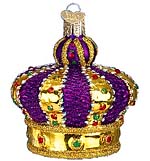 When Libra rises, Aries sets. Aries is the sign on the Seventh House cusp, the place of the "other". This means partners and spouses. For Princess Grace, the seventh house ruler Mars, is in its own sign Scorpio, in the Second House of wealth, aspected by Jupiter from Taurus. This is a Yoga or combination for a wealthy spouse. It's a classic - literally. Any well-trained astrologer would notice it.
When Libra rises, Aries sets. Aries is the sign on the Seventh House cusp, the place of the "other". This means partners and spouses. For Princess Grace, the seventh house ruler Mars, is in its own sign Scorpio, in the Second House of wealth, aspected by Jupiter from Taurus. This is a Yoga or combination for a wealthy spouse. It's a classic - literally. Any well-trained astrologer would notice it.
Since the second house rules the face, a powerful Second House can give a "powerful" face. In the chart of a woman - a double Libra at that - a powerful face can mean a beautiful face. Because Mars is in the second house from the Sun (Surya Lagna), these Yogas get doubled. What does this mean? More power to partners, more beauty to the face. More money. More privilege.
Jupiter is in the Eighth House, in Taurus. The Eighth House is the Second House from the Seventh House. It is the money house (second) of the partner (seventh). Jupiter in Taurus is good for wealth and in the money house of the partner, it helps bring even greater prosperity.
The Lord of the Eighth House is Venus. Where is Venus? It's in its own sign, in the first house, sextile to Saturn. Thus there are more favorable money symbols - especially for the partner. Venus also rules the Eighth House from the Moon, namely Libra and is found therein. More money for the partner.
If the chart of Princess Grace didn't show these recurring patterns, then we would have to doubt the birth time - or wonder whether astrology really works as promised!
As we've pointed out in previous articles, the North Node (Rahu in Sanskrit) gives worldly position and power when it's strongly disposed. The best way to evaluate the Nodes, is to look at the planet which rules the sign they're located in. This is otherwise known as the "Dispositor" of the node. Because Rahu is in Aries, Mars (and Pluto too) is its dispositor.
There's that Mars again: in its own sign, in the Second House of wealth. The partner symbol shows powerful partners indeed. The fact that Pluto is in the fortunate Ninth House, forming a Grand Trine with the Sun and Moon, is only icing on the cake.
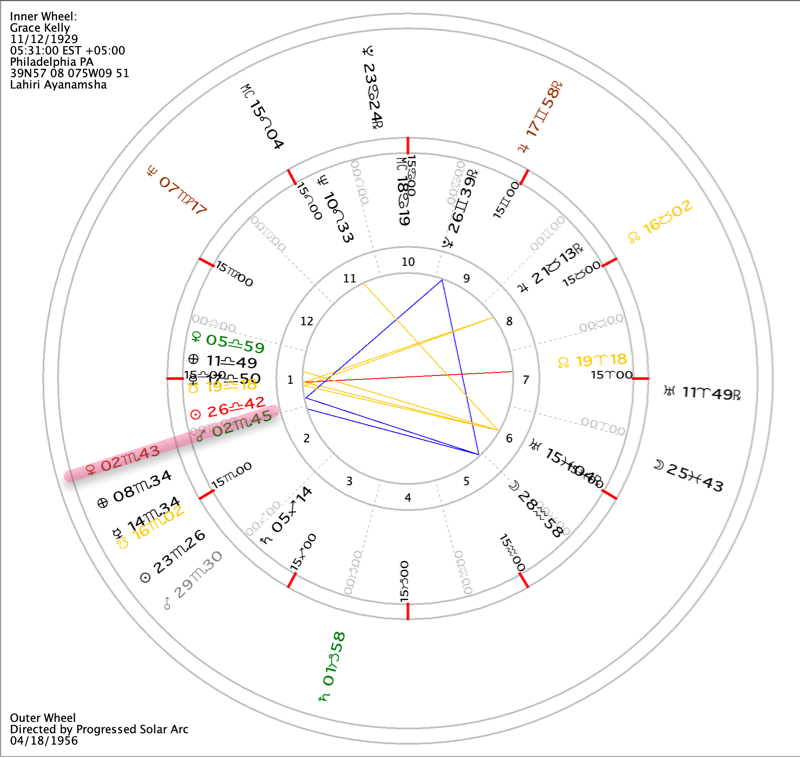
Grace Kelly married Prince Ranier of Monaco on April 18, 1956. She was 27 years old. Directing the chart forward by Solar Arc, we add roughly 1 degree per year to all her planets. Where is the chart lord Venus at at age 27 ? Conjunct Mars, the ruler of the house of Marriage. This is a classic first house/seventh house pattern. When the ruler of the chart combines with the ruler of the partner , we hear wedding bells ! This effect is strong enough that there is no need for us to consider other methods, such as transits, progressions, eclipses, or planetary periods: just the natal chart, relating to itself, where space = time.
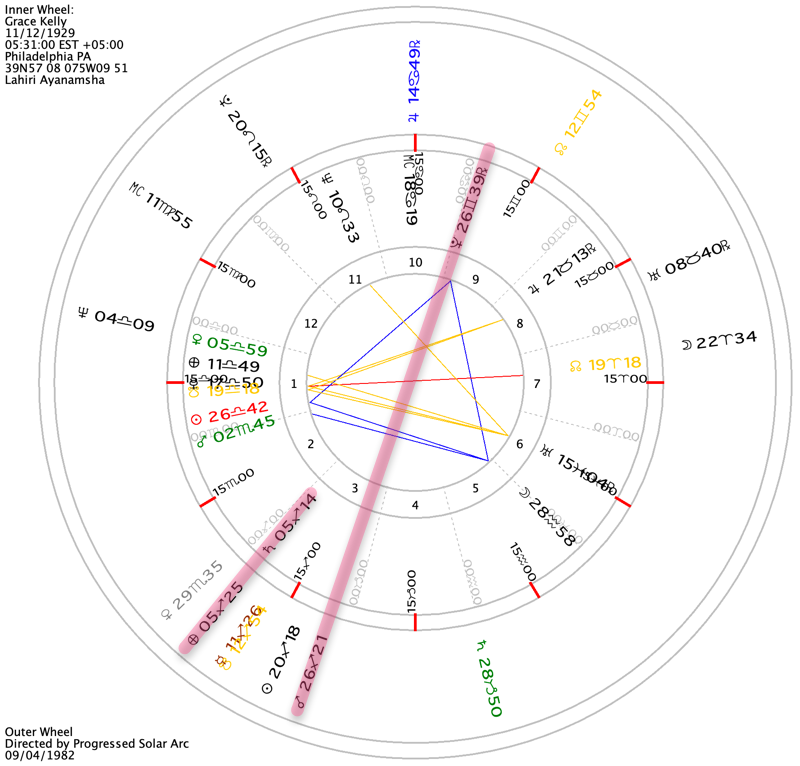
Grace Kelly died in a tragic automobile accident, in 1982. She was 53 years old. Directing the chart forward by Solar Arc, we add 53 degrees to the Ascendant. During the 53rd year of her life the all-important ascending degree makes a conjunction with Saturn, the prime malefic. We might say this was a karmic seed - evident at birth in the natal chart - which bore fruit right on schedule. Where is that Saturn? In the Third House, which relates to short trips, automobile rides, etc. At the same time, directed Mars reached an opposition to Pluto: a dangerous combination.
Death while driving is seen by the planet which sits in the Eighth House in the natal chart: Jupiter. Jupiter itself rules long journeys, so we could predict that she would die abroad, far from home, outdoors. These are all natural significations of Jupiter. Her 3rd house is Sagittarius and Jupiter becomes Third Lord. Like Saturn in the Third House, the pattern of Lord of the Third House in the Eighth House, shows danger or death through short journeys, on the road, crossing the street, running an errand.
 Some astrology teachers suggest that nothing can happen in the lifetime of an individual, unless it is promised in the Natal Chart. The birth horoscope or nativity, is therefore the foundation of astrology. When we have the exact birth time, we are able to use all the tools to their full potential. We need to know the rising sign and the exact positions of all the houses. Without that level of detail, Astrology has only one leg to stand on.
Some astrology teachers suggest that nothing can happen in the lifetime of an individual, unless it is promised in the Natal Chart. The birth horoscope or nativity, is therefore the foundation of astrology. When we have the exact birth time, we are able to use all the tools to their full potential. We need to know the rising sign and the exact positions of all the houses. Without that level of detail, Astrology has only one leg to stand on.
Transits and progressions are generally considered with respect to the... natal chart. Symbolic Directions are merely the natal chart, rotated through space, according to elapsed time. Eclipses trigger aspects and patterns that are found in the... natal chart!
It has also been suggested that today, we posses only a small fragment of the knowledge of Astrology. Let's hope that more is rediscovered... soon!
 Interested in the horoscopes of other cinema stars ?
Interested in the horoscopes of other cinema stars ?
See these articles:
 Want to learn more about Astrology ?
Want to learn more about Astrology ?
See these authors: